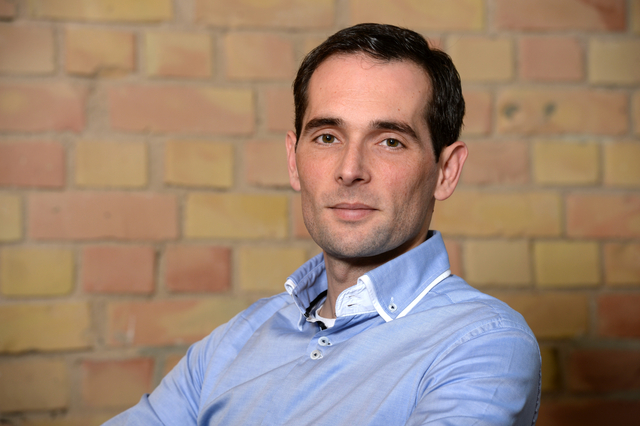New research by David Klenert and Linus Mattauch proposes two ways of using wealth taxes to reduce inequality and increase efficiency without compromising economic growth.
Economic inequality has risen significantly within major economies around the world in the past few decades. The disparity appears especially pronounced when one considers inequality in wealth ownership. In China, Russia, and the United States, the wealth share of the top 1 percent has roughly doubled. At the global level, the top 1 percent wealth share has increased by 5 percentage points since 1980, while the share of the bottom 75 percent remained constant at around 10 percent (see figure 1 and Alvaredo et al. 2018).
In a highly globalized and technologically advanced world, policies for redistribution that mainly rely on wage income taxes are no longer sufficient to counteract this trend.[1] An increased concentration of wealth owned by a small share of society further deepens income disparities: The reason is that wealth, if well invested, generates additional income. This process is illustrated by the unequal development of income shares over the last decades: While income shares of the top 1 percent and 10 percent grew by several percentage points in China, India, Europe, Russia, and the United States since 1980, the bottom 50 percent income shares fell by several percentage points over the same timespan (Alvaredo et al., 2018).
Figure 1: Top 1% wealth share 1960–2015, in China, France, Russia, the UK, and the US. Generated from www.wid.world on January 15, 2019
An alternative way of slowing down or reversing the trend in wealth inequality would be to tax the returns to wealth directly, instead of taxing wages. However, traditional economic analysis has pointed out two important arguments why taxing wealth is not a good idea. First, if wealth is understood to be productive capital, such as machines, houses, etc., then taxing its returns is particularly inefficient. It reduces growth more strongly than other taxes would because it reduces incentives to invest in productive capital. Second, even if capital taxes are introduced only for the purpose of redistribution, they might not achieve that objective either. This has to do with who ultimately bears the burden of the tax. The rich might be able to pass on to the poor the cost of increased capital taxes by shifting that cost onto wages (Stiglitz, 2016).
Recent research, to which we have contributed, shows better ways to think about taxing wealth that avoid the two classic objections. Wealth taxes can reduce wealth disparities without compromising efficiency; it can sometimes even increase economic growth. One way is to realize that wealth not only consists of producible capital, but also of non-producible (or "fixed") factors. Fixed factors generate rents—that is, payments in excess of what is needed to sustain production. Taxing these rents can enhance efficiency and, potentially, reduce inequality. Another way is to use capital tax revenue not for direct redistribution but rather for financing public investment, which is severely under-funded in rich countries (see Bom and Ligthart, 2014). This under-funding is illustrated by the fact that public wealth as a share of national wealth has fallen in major economies (see figure 2). In France, for example, public wealth decreased from around 20 percent to 3 percent over the course of the last four decades; and spending on public construction in the United States has fallen to 1.4 percent of GDP in 2017, the lowest share on record (The Economist, 2017).
Figure 2: The decline of public wealth as a share of national wealth, 1970-2016. Source: Alvaredo et al. (2018), Figure E.7.
In the first way, one prominent example of a rent-generating fixed factor is land.[2] The owner of a piece of land in a major city can charge a much higher rental rate than the owner of a piece of land somewhere in the countryside, simply because urban land is scarce. Its value is derived from the totality of benefits of being in a city. In economics, it is common knowledge that taxing land is not distortionary, i.e., there is no efficiency loss from it. The reason is that, as an approximation, scarce urban land is fixed: Land owners cannot pass on a land tax through higher prices. The supply of urban land is inelastic—that is, a price increase will not affect its supply—while its demand is not.
Feldstein (1977), however, discovered that a tax on land rents can indeed be distortionary, by inducing a shift in the portfolio of investors when they hold more than one asset. Edenhofer et al. (2015) show that such a “portfolio effect” can be welfare-enhancing if there is too little capital in an economy relative to aggregate consumption, both by increasing growth and reducing inequality between generations.[3] Franks et al. (2018) extend this analysis to account for wealth inequality within different generations and show that taxing a fixed factor has a mildly progressive effect. Their work also allows for additionally analyzing the equity and efficiency effects of inheritance taxation. They find that combining taxes on a fixed factor with an inheritance tax reduces inequality more strongly, while preserving the efficiency-enhancing effect of rent taxation.
In the second way, even if one taxes producible capital (not rents) when taxing wealth, one can reduce inequality, while enhancing efficiency at the same time. The key to this approach is to use the revenue for public investment. Reinvesting capital taxes in, for example, low-carbon transport infrastructure can reduce the cost of production and thus make economies more competitive.
Reinvesting the tax proceeds in human capital, via education, creates a dynamic workforce that is more resilient to technological advances and to changes in global production structures such as those from decarbonizing the economy. Further, the automation of routine tasks by robots and artificial intelligence accelerates technological change and requires perpetual learning over the course of a standard career. In such an environment, our research shows that the efficiency-reducing effect of capital taxes is offset by the productivity-enhancing effects of public investments. At the same time, wealth inequality is reduced, first, as a direct effect of the tax on wealth owners, and second, through higher wages received by better-educated workers (Klenert et al., 2018; Mattauch et al., 2016; Mattauch et al., 2018; Stiglitz 2018).
In sum, income taxation is not sufficient to address increasing disparities in income and wealth. Taxing wealth directly has been previously thought to harm growth and not help much with reducing inequality. We propose two ways of using wealth taxes to reduce inequality that actually work and also increase efficiency. The first way is to only tax income from rent-generating assets, not from productive capital. The second is to tax returns to wealth in general and use the revenue for public investment in infrastructure and education, to create a workforce more resilient to globalization and technological change. Both ways achieve redistribution by a wealth tax, but differ in the effect on productivity. While taxing rents in itself can enhance efficiency, revenue from taxing returns to wealth in general has to be used for public investment.
[1] It has previously been argued that this insufficiency is a consequence of strongly increased pre-tax income inequality induced by accelerated technological change and globalization. Pre-tax income inequality took a different form when the income tax system was designed, see for instance:
https://promarket.org/the-inequality-paradox-rising-inequalities-nationally-diminishing-inequality-worldwide/
[2] Monopolies also generate rents, since they can overcharge consumers due to their lack of competition. This practice increases inequality and reduces productivity in the long term.
[3] Incidentally, this finding has a major implication for another great policy challenge: mitigating climate change. The reason is that decarbonization of the economy collects the rents on fossil resources, and this collection yields additional economic growth as long as there is insufficient private and public capital; see Siegmeier et al. (2018).
References:
Alvaredo, F., Chancel, L., Piketty, T., Saez, E., & Zucman, G. (Eds.). (2018). World inequality report 2018. World Inequality Lab.
Bom, P. R., Ligthart, J. E. (2014). What have we learned from three decades of research on the productivity of public capital? Journal of Economic Surveys, 28(5), 889-916.
Edenhofer, O., Mattauch, L., Siegmeier, J. (2015). Hypergeorgism: When rent taxation is socially optimal. FinanzArchiv: Public Finance Analysis, 71(4), 474-505.
Klenert, D., Mattauch, L., Edenhofer, O., & Lessmann, K. (2018). Infrastructure and inequality: Insights from incorporating key economic facts about household heterogeneity. Macroeconomic Dynamics, 22(4): 864-895.
Feldstein, M. (1977). The surprising incidence of a tax on pure rent: a new answer to an old question. Journal of Political Economy, 85(2), 349-360.
Franks, M., Klenert, D., Schultes, A., Lessmann, K., & Edenhofer, O. (2018). Is capital back? The role of land ownership and savings behavior. International Tax and Public Finance, 25(5), 1252-1276.
Mattauch, L., Edenhofer, O., Klenert, D., & Bénard, S. (2016). Distributional effects of public investment when wealth and classes are back. Metroeconomica, 67(3), 603-629.
Mattauch, L., Klenert, D., Stiglitz, J. E., Edenhofer, O. (2018). Overcoming Wealth Inequality by Capital Taxes that Finance Public Investment. NBER Working Paper 25126.
Siegmeier, J., Mattauch, L., Edenhofer, O. (2018). Capital beats coal: How collecting the climate rent increases aggregate investment. Journal of Environmental Economics and Management. 88: 366-378.
Stiglitz, J. E. (2016). New theoretical perspectives on the distribution of income and wealth among individuals. In: Basu, K., Stiglitz, J.E. (eds.). Inequality and Growth: Vol .1 Patterns and Policy (pp. 1-71). Palgrave Macmillan, London.
Stiglitz, J.E. (2018). Pareto efficient taxation and expenditures: Pre-and redistribution. Journal of Public Economics, 62:101—119.
The Economist (2017). Investment in American infrastructure is falling. Retrieved from: www.economist.com/finance-and-economics/2017/08/12/investment-in-american-infrastructure-is-falling



